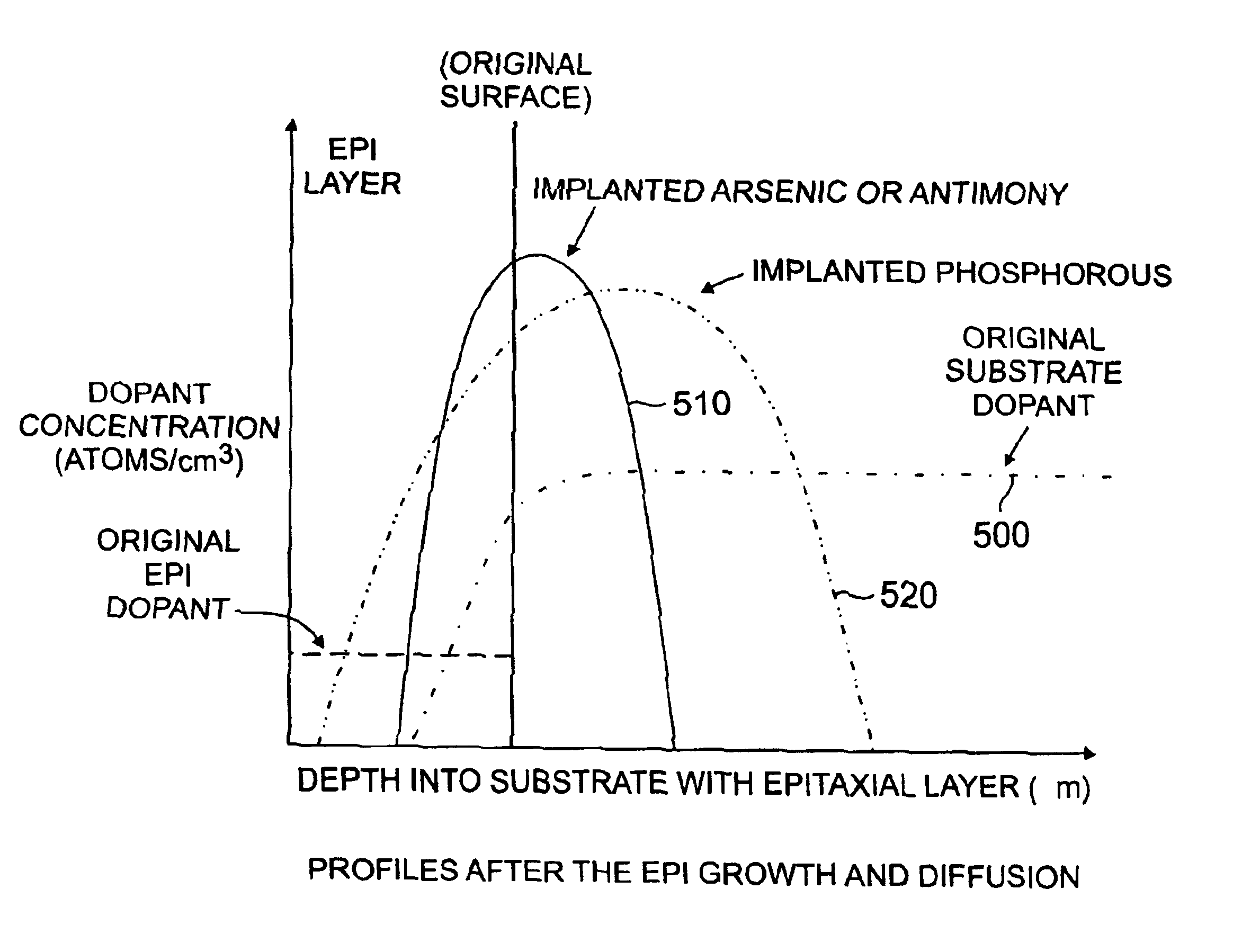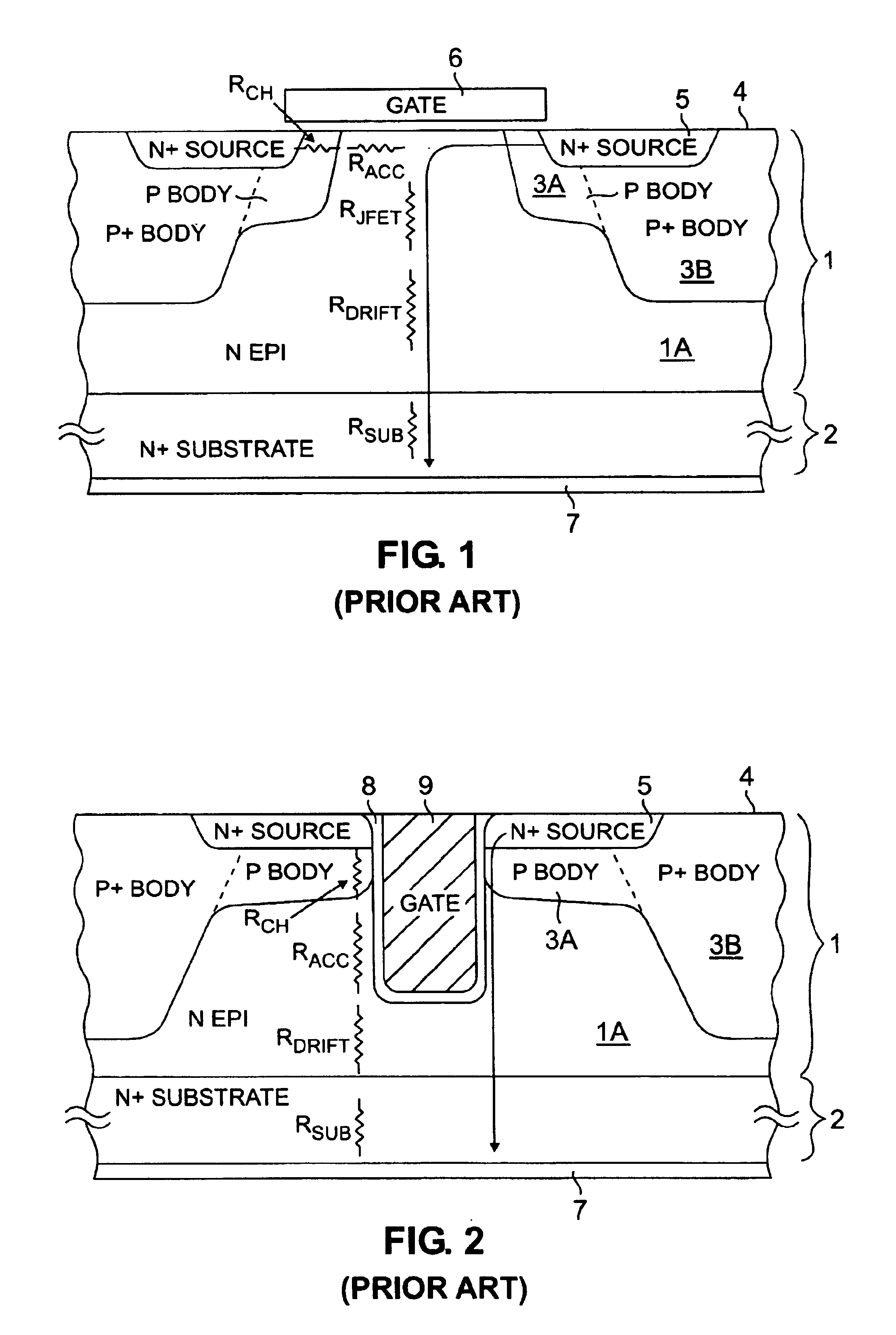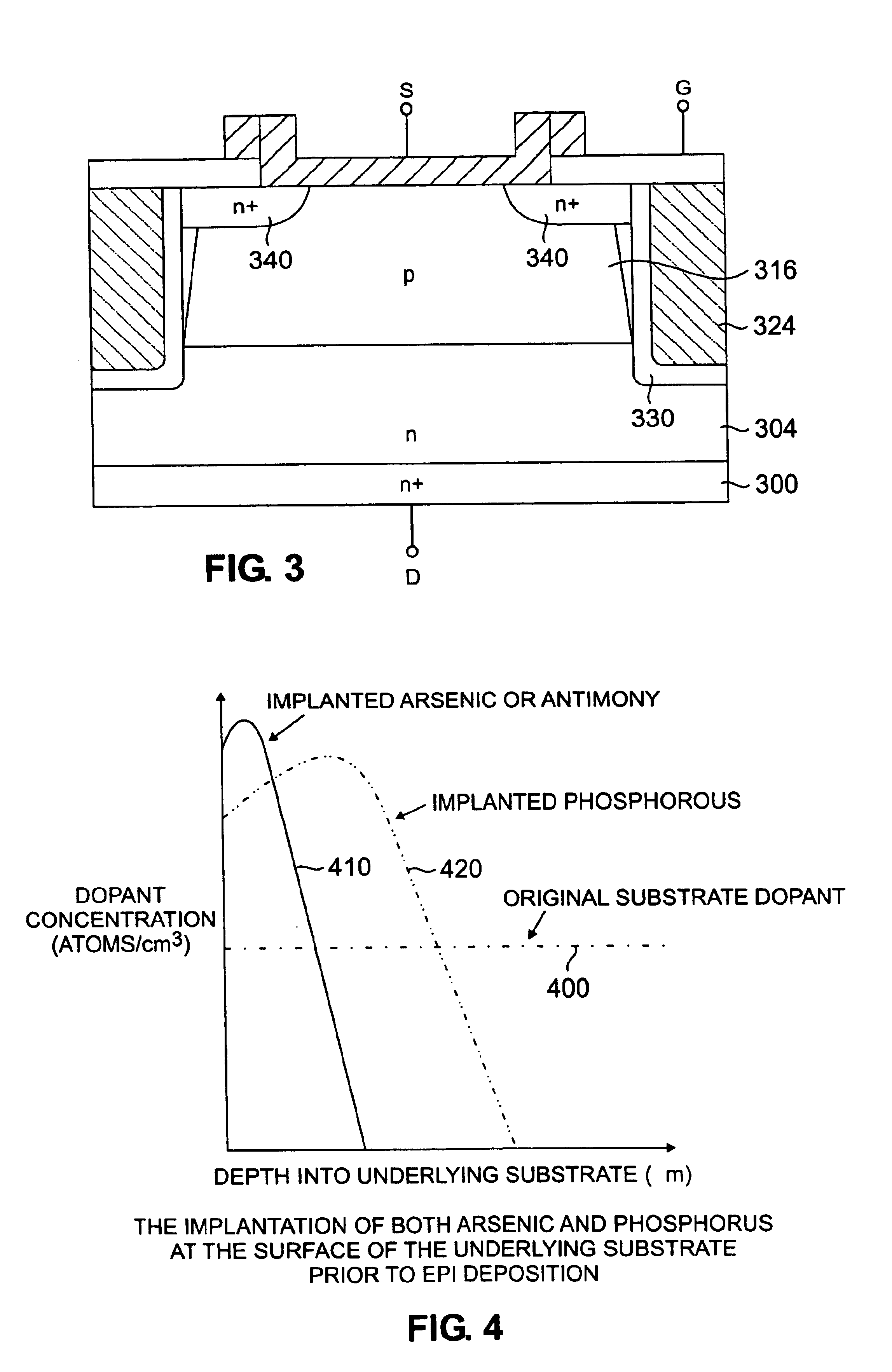Double diffused field effect transistor having reduced on-resistance
a field effect transistor and on-resistance technology, applied in the field of semiconductor wafer processing, can solve the problems of high energy ion implantation techniques, unsatisfactory decrease of device breakdown voltage, and additional masking steps
- Summary
- Abstract
- Description
- Claims
- Application Information
AI Technical Summary
Benefits of technology
Problems solved by technology
Method used
Image
Examples
Embodiment Construction
[0023]FIG. 3 illustrates one embodiment of a trench field effect transistor constructed in accordance with the present invention. The structure includes, in this embodiment, an n+ substrate 300 on which is grown a lightly n-doped epitaxial layer 304. As described in more detail below, the surface region of substrate 300 has a higher dopant concentration than its interior. Within doped epitaxial layer 304, a body region 316 of opposite conductivity is provided. An n+-doped region 340 that overlies most of the body region 316 serves as the source. A rectangular shaped trench 324 is provided in the epitaxial layers, which is open at the upper surface of the structure and defines the perimeter of the transistor cell. A gate oxide layer 330 lines the sidewalls of the trench 324. The trench 324 is filled with polysilicon, i.e., polycrystalline silicon that has been doped to make it conductive. A drain electrode is connected to the back surface of the semiconductor substrate 300, a source ...
PUM
 Login to View More
Login to View More Abstract
Description
Claims
Application Information
 Login to View More
Login to View More - R&D
- Intellectual Property
- Life Sciences
- Materials
- Tech Scout
- Unparalleled Data Quality
- Higher Quality Content
- 60% Fewer Hallucinations
Browse by: Latest US Patents, China's latest patents, Technical Efficacy Thesaurus, Application Domain, Technology Topic, Popular Technical Reports.
© 2025 PatSnap. All rights reserved.Legal|Privacy policy|Modern Slavery Act Transparency Statement|Sitemap|About US| Contact US: help@patsnap.com



